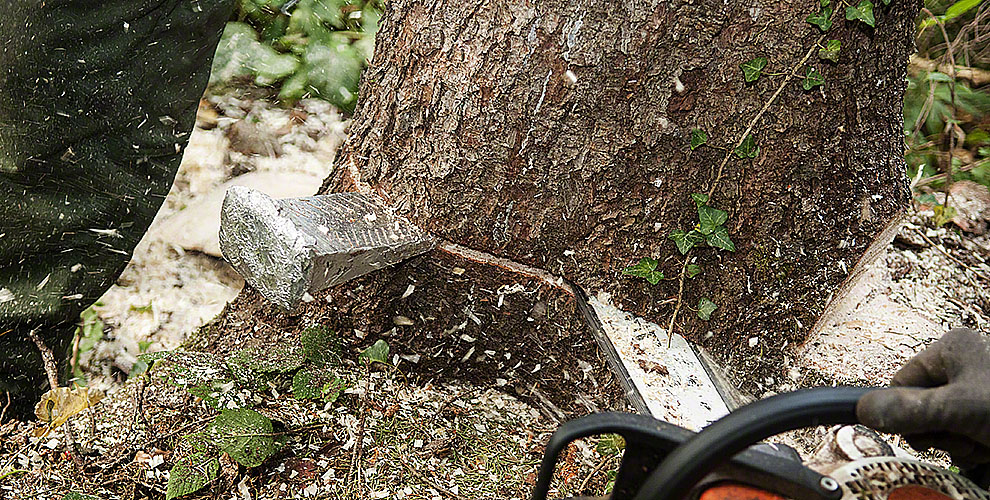Hazardous trees are exactly what they sound like. These trees are not only threatening but also dangerous for the surrounding properties, humans, and other living beings. The biggest problem with hazardous trees is that they can fall anytime and the house owner is blamed. So, before it does any damage, call in tree removal companies or follow the below tips to help you remove the tree.
Gather The Tools & Wear Safety Equipment
The first thing you need to do when it comes to removing a hazardous tree is gather the tools and wear safety equipment. Regardless of the size, you should be covering the main parts of your body such as the eyes, hands, and everything in the upper part of your body.
Most people assume that bringing down a smaller hazardous tree does not pose much of a threat. This is where things go wrong. The first rule you need to learn when bringing down a tree is never to underestimate the amount of damage it can cause.
Part of the reason you should be wearing safety equipment is to protect yourself from the sharp tools you will be using. Chainsaws and similar equipment can amputate or cause serious injuries. Plus, you can also fall from a height on rocks, stones, and broken tree branches. So, wearing safety equipment will help prevent serious injuries.
Inspect The Tree
The next step is inspecting the tree. This is yet again another tip that is mostly neglected but if followed can do wonders. A tree inspection is important as it gives you an idea about the condition and health of the tree. Bringing down a tree that is dead as compared to a living are two different situations.
You cannot cut an already dead tree the same way as a living one because you never know how a dead tree will respond. It might be that you touch it slightly and a limb falls on your head. However, in the case of a living tree, you will already be aware of how much force and the type of cuts you will need to make to bring the tree down.
But with a dead tree, you will never know what to expect. This is why you should inspect a tree for any fungi, infections, diseases, etc. If you find that the branches are dry and the trees are falling, it means the tree is probably dead.
Plan A Safe Escape
Once you are done inspecting the tree and making a separate strategy for an alive and dead tree, it comes down to planning an exit route. An exit plan helps you escape the site before the tree begins its fall and quickly hits the ground. While planning the safe escape, make sure to remove any hurdles for a quick exit.
Quite often, professionals find themselves tripping over tree branches, leaves, rocks, etc. in a state of emergency. This is the last thing you would want while the tree is falling to the ground. Keep a safe distance from the tree and if possible, try to come up with two or three escape routes.
Bring Down The Tree
Next, you should make the first cut. If you are working with a big tree, you will most probably need a chainsaw. Make the first notch in the direction where you want the tree to fall. Don’t go all the way in. Then, go to the other side and make a notch to the point where it meets the previous notch.
Then again, you do not need to go all the way in and notice when the tree is about to fall. Gather all your tools and equipment and exit the area. Furthermore, ask a friend or a family member to keep an eye on the tree just to be extra safe.
Tree-felling situations can turn horribly wrong within a split second and having a second pair of eyes can help you escape before time.
Final Word
Removing a hazardous tree is all about using the right tools and techniques. If it’s a small tree, you can probably remove it by using a truck or crane. However, if it is bigger than you can handle, it would be better to consult emergency tree services Chevy Chase for safe removal.


